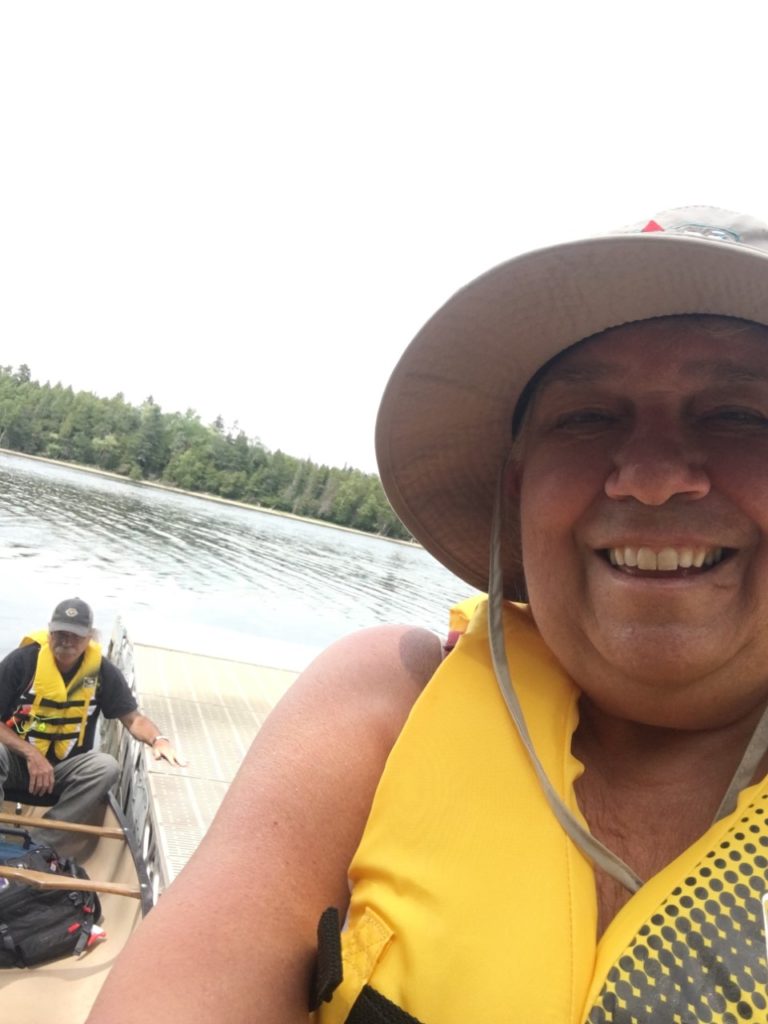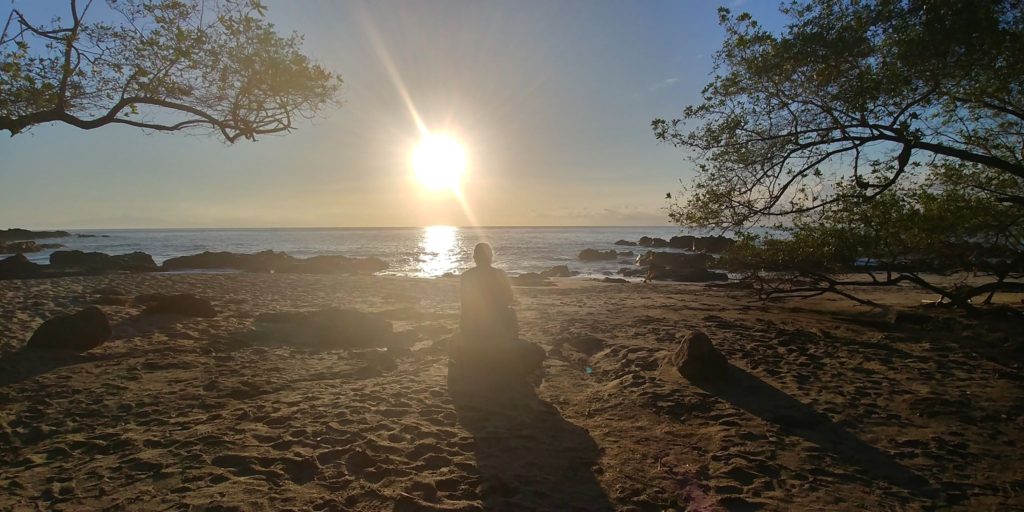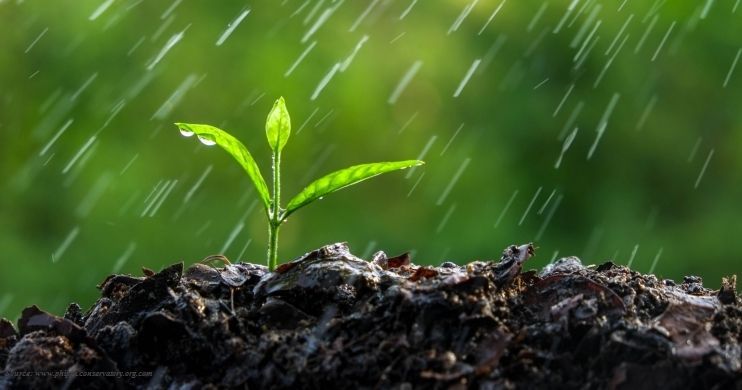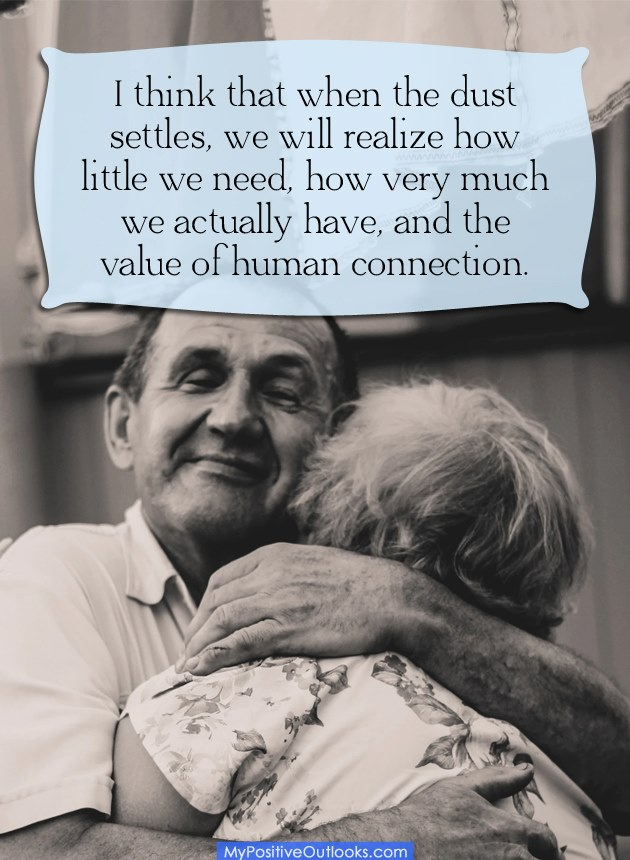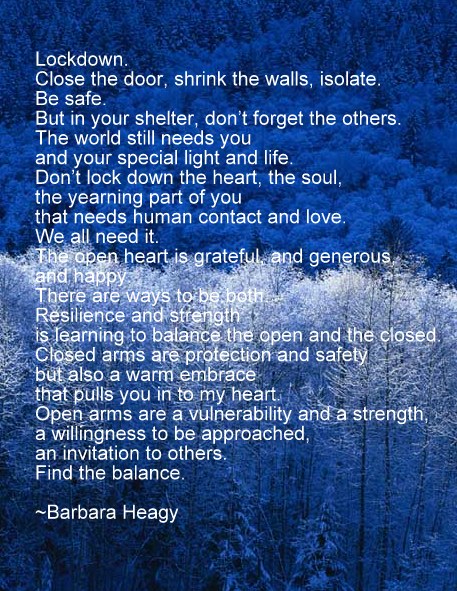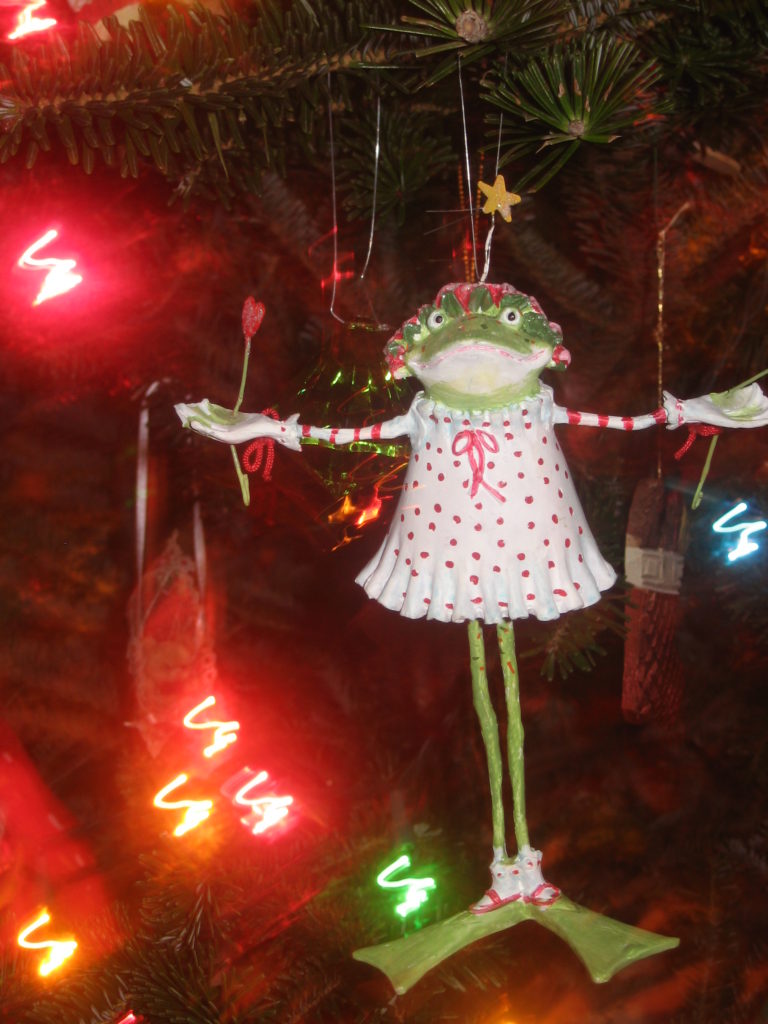
This morning I had a Facebook conversation with a writer friend, Carolyn Wilker. She had posted a picture and comment about her Christmas tree and its decorations. We ended up listing the variety of ornaments we had on our Christmas trees and shared a little bit about the stories behind them, as she said, “Stories of love on our Christmas trees.” I told her that there was a story for every decoration on my Christmas tree. Here’s one of them.
Between 2001 and 2010, Tom, an old high school friend who later became my husband, was a part of my life.When I first started dating my Tom, I noticed he had a small collection of frogs in his home. I began looking for other frogs to add to his collection and bought him a colourful, whimsical frog as a decoration for our first Christmas tree. So began a new tradition.
Each Christmas, a new shiny frog was added to the tree to celebrate another happy year together for us. Each one was unique and different and acted as a symbol of our love and time together.
After six years of love, we were married. Just before our fourth wedding anniversary, Tom was diagnosed with small-cell lung cancer. Seven months later, just before Christmas, the cancer took Tom’s life.
We had ten devoted years together. Ten frogs on the Christmas tree are a reminder every year of that fulfilling love that I shared with that wonderful man.
